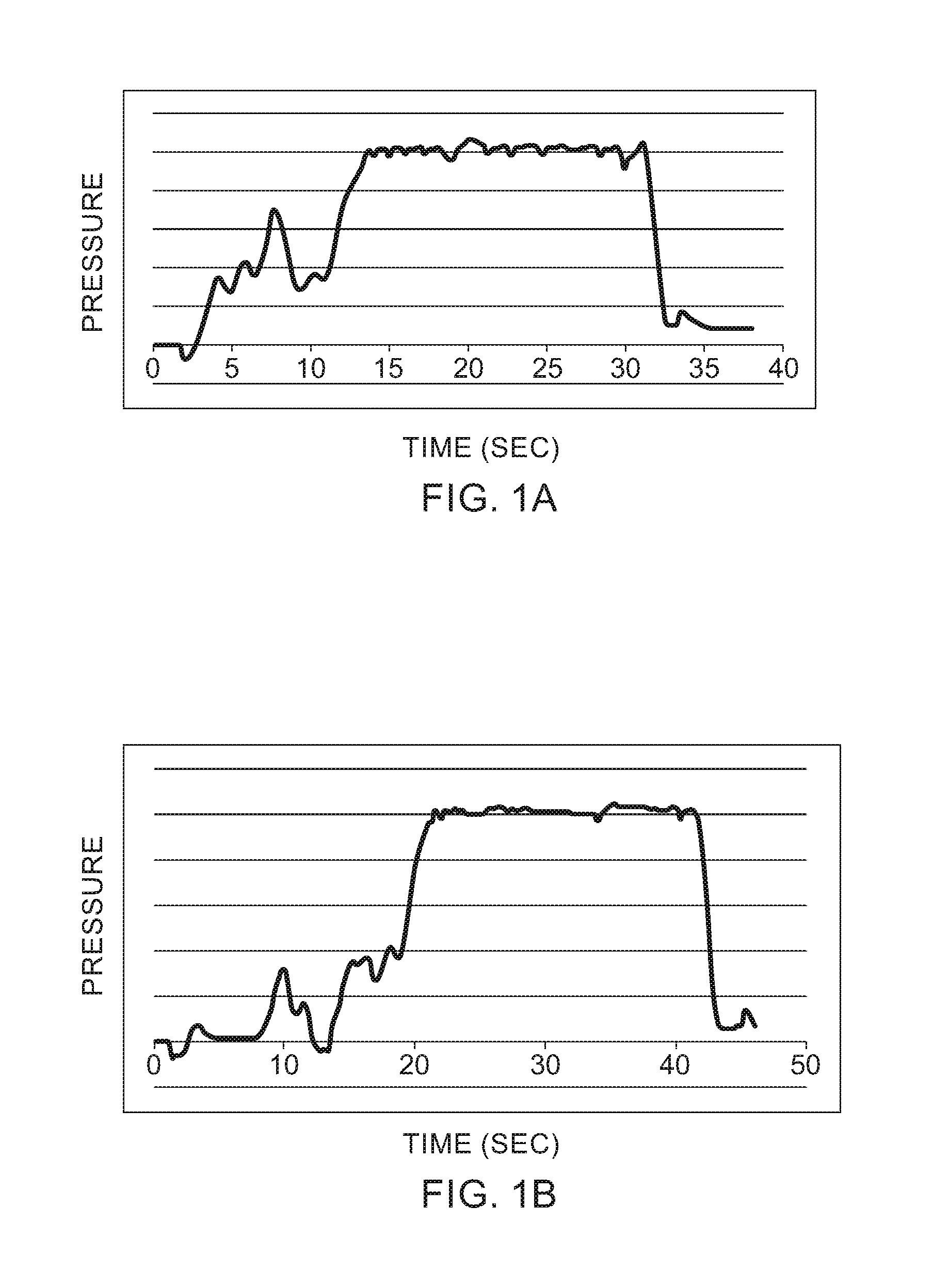Device and method for identification of a target region
a target region and device technology, applied in the field of target region device and method identification, can solve the problems of greater challenge, false-lor further complicating the detection of true-lor, and the inability to perform epidural injections, etc., and achieve the effect of convenient identification
- Summary
- Abstract
- Description
- Claims
- Application Information
AI Technical Summary
Benefits of technology
Problems solved by technology
Method used
Image
Examples
Embodiment Construction
[0075]A method and device are provided for identifying anatomical target regions, such as the epidural space, which reduces the detection of false-positive loss-of-resistance (false-LOR or false-positive-LOR) in non-specific tissues of the body. The device is designed with hardware and a software logic that detects a false-positive-LOR and enables detection of a true-Loss-of-Resistance with a high level of specificity and certainty.
[0076]In preferred embodiments a non-continuous alert signal and mechanic logic is provided to indicate a specific high pressure threshold warning to be followed by a specific minimum pressure threshold based on a software logic interpretation which helps avoid the commonly detected false-LOR prior to the detection of a true-LOR.
[0077]In one embodiment the apparatus of the invention includes a software logic capable of incorporating a first pre-determined pressure value representative of the ligamentum flavum in which said first pre-determined pressure va...
PUM
 Login to View More
Login to View More Abstract
Description
Claims
Application Information
 Login to View More
Login to View More - R&D Engineer
- R&D Manager
- IP Professional
- Industry Leading Data Capabilities
- Powerful AI technology
- Patent DNA Extraction
Browse by: Latest US Patents, China's latest patents, Technical Efficacy Thesaurus, Application Domain, Technology Topic, Popular Technical Reports.
© 2024 PatSnap. All rights reserved.Legal|Privacy policy|Modern Slavery Act Transparency Statement|Sitemap|About US| Contact US: help@patsnap.com










